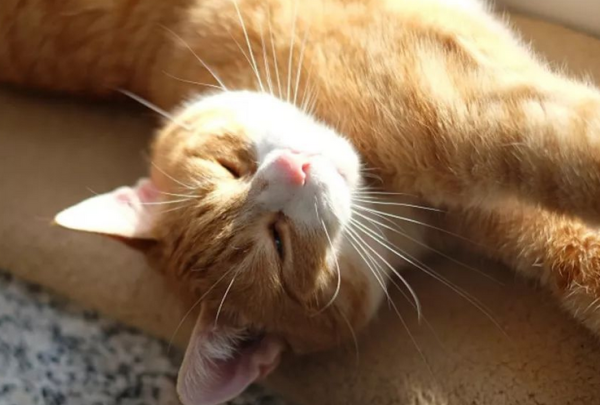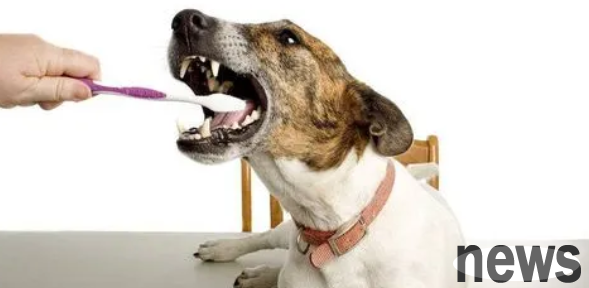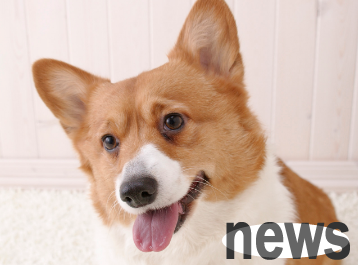Understanding the digestive characteristics of dogs and cats from the physiological structures
Physical characteristics of dogs and cats
1. Characteristics of dogs and cats' digestive organs
Chivers and Hladilz (1980) reported the intestinal coefficients suitable for most mammals: (stomach + cecum + colon) weight/small intestinal weight. This coefficient of cats is slightly smaller than that of dogs, and the ratio of intestinal length to body length of cats is smaller than that of dogs.
The absorption and normal operation of nutrients depends on the wrinkles and the number of microvilli in the intestinal mucosa. The ratio of the mucosa and serosal area of cats is: jejunum 15:1, ileum 12:1, and colon 1:1. Compared with dogs and cats, the surface area of the mucosa is roughly the same, but the ratio of the mucosa to the serosal surface area of the dog is slightly smaller than that of cats. The digestive tracts of dogs and cats are generally similar, but have their own characteristics. The tissue structure in the gastric glands of the cat's stomach is consistent, while the gastric glands of the dog are divided into two areas. In the proximal area, the mucosa is very thin and has obvious pits. The distal area is slightly reddish-brown, the mucosa is thicker and there are few pits. The second characteristic is the difference in cecum structure between dogs and cats. The ileum of the dog's small intestine is directly connected to the colon, and the cecum is located at the bulge at the proximal end of the colon. The cat's cecum is very small, incompletely developed, and is comma-shaped, with the cecum connected to the ileum.
Based on the characteristics of anatomy and histology, the ratio of the cecum to the weight of a dog is slightly larger than that of a cat, which means that the plant-based raw materials contained in the feed of a dog can be higher than that of a cat.
2. Digestive rate of feed by dogs and cats
In order to understand the digestive ability of dogs and cats to feed, researchers conducted a series of experiments on different types of pet feed and different breeds of dogs or cats. It was found that the breeds of dogs and cats had no effect on the apparent digestibility of feed. When feeding the same species and the same amount of food, the apparent digestibility coefficient of dogs is about 1/10 higher than that of cats. Dogs can utilize carbohydrates, maltodextrin, corn syrup, or sucrose that accounts for 54% of the energy in the feed without any adverse effects. However, dogs with the same amount of lactose will experience indigestion, diarrhea and discomfort. Morris Trudell and Pencovic (1977) studied glucose, sucrose, lactose, dextrin, starch and cellulose added to adult cat meat-type diets. The results showed that except for cellulose, cats can digest these carbohydrates, with an apparent digestibility coefficient of 94%. However, when lactose accounts for 15% of the dietary energy, it can cause diarrhea.
researchers also found that most (about 79%) of coarsely crushed corn disappeared in the cat's intestines. The finer the grain is crushed, the apparent digestibility coefficient of the grain can be increased to 94%. Coarsely crushed wheat starch is not as easy to digest as finely crushed wheat starch, but due to the degree of crushing, the effect on feed raw materials is slightly better than that of wheat. Coarsely crushed ripe wheat or corn starch is less digestible than finely crushed raw wheat or corn starch.
Compared with rabbits, rats, mice, guinea pigs, and humans, the amylase content in the salivary glands of dogs and cats is very low. Compared with dogs and cats, the activity of maltose and sucrose hydrolase per gram of mucosa in the small intestine is higher than that of dogs. When lactose is added to meat-type feed, the cat's apparent digestibility of protein in the diet is reduced. This may be due to the restriction of protein digestion by urinary nitrogen fermented by microorganisms, or the reduction of dietary protein digestibility due to the speed of food passing through the digestive tract. Early studies found that dogs have very small amounts of volatile fatty acids in their colon. These small amounts of volatile fatty acids are not affected by dietary components and therefore have no nutritional significance.
The digestion of protein by dogs and cats depends on the source of the protein and its processing technology. The average digestibility coefficients of protein in different types of commercial feed, experimental diet and fresh ground meat of dogs and cats were 0.87 and 0.82, respectively. The digestibility of crude protein in fresh ground meat in cats is 96%, which is significantly higher than other commercial feeds.
3. Eating habits of dogs and cats
Mugford (1977) observed the eating habits of dogs and cats within 24 hours. It turned out that the dog's daily eating habits were very regular, while the cat was likely to eat at any time within 24 hours. When eating, the distance between meals can be as short as 3 minutes, and the average number of meals eaten during the day and at night is basically similar. This shows that cats do not have certain feeding rules. For example, a 26g mouse can provide about 0.14 megajoules of energy. A lively adult cat needs about 0.34 megajoules of energy per kilogram of body weight. Therefore, for a cat with a weight of 4 kg, it takes about 10 26 grams of mice a day to eat. For non-domestic cats, frequent feeding is necessary to meet their energy needs.
Ardisson et al. (1981) observed the dog's feeding habits and found that the average number of feedings per day in dogs was 3.96 times, with an average feeding intake of 115 grams per time. This shows that dogs eat less frequently than cats, and the amount of feeding intake is slightly higher than that of cats.
4.Drinking habits of dogs and cats
Drinking needs of dogs and cats are self-regulated, and are affected by parameter factors such as food type, ambient temperature, and physiological conditions. Among them, food type is the main factor affecting dogs and cats' drinking habits. Experiments have shown (Kane et al., 1981) that cats can eat canned feed (78% water), and they can not drink water all day. Cats who feed puffed feed drink water on average 16 times a day. Cats who eat synthetic feed drink water on average 12 times a day. Generally speaking, the number of times a cat drinks water is similar to the number of times it eats.
Metabolic characteristics of different nutritional needs of dogs and cats
1. Nutritional metabolic characteristics of carbohydrates of dogs and cats
Glucose is required for metabolic activities of animals. Glucose usually comes from glucose precursors such as amino acids and glycerol. The liver and kidney synthesize glycogen to provide the glucose needed by the body.
Romsos et al. (1976) provided two diets to puppies: one is carbohydrate-free diet, and the other is 62% of the metabolism energy from carbohydrates..
3. Needs and metabolic characteristics of micronutrients in dogs and cats
(1) The amount of metabolic energy required for cats is greater than that of dogs. Table 4 shows the amount of vitamins required for dogs and cats in the diet unit megajoules. As can be seen from the table, the amount of fat-soluble vitamins required by dogs and cats is basically similar.
carotene is a precursor to vitamin A and is present in plant-based feed. Usually, there is beta-carotene hydrogenoxygenase in the intestinal mucosa in mammals (including dogs), which can convert beta-carotene into vitamin A. Cats lack this enzyme and cannot convert β-carotene into active vitamin A, so the vitamin A required by cats must be obtained from diet.
From the perspective of water-soluble vitamins, cats have higher requirements for thiamine, niacin, pyridoxine and folic acid; dogs have higher requirements for pantothenic acid. The amount of thiamine in cats is about 4 times that of dogs. This difference is mainly caused by different species of animals, but it has not been reported to explain this difference from the perspective of nutritional metabolism.
cats require higher niacin than dogs. This may be because the pyridine carboxylase activity in cats is very high, removing the tryptophan degradation product required for nicotinic acid synthesis from the pathway to tryptophan to nicotinic acid, thereby inhibiting the ability of nicotinic acid in cats. Therefore, cats have a higher niacin requirement. Since cats require higher protein requirements than dogs, pyridoxal phosphate is a very important coenzyme during amino acid catabolism, cats have higher pyridoxine requirements.
(2) Taurine
No test indicates that dogs need taurine. This is not the case for cats. The diet must contain taurine to maintain a certain concentration of taurine in the body tissues, especially when the sulfur-containing amino acid levels in the diet are low. Taurine can ensure the integrity of cat retinal tissue and maintain the normal growth of kittens. Female cats feeding taurine-free diets during pregnancy will lead to a decrease in the first birth rate, a decrease in survival rate, malnutrition in cells and abnormal bone development.
Sulphur-containing amino acids are precursors for the synthesis of taurine. The content of taurine in cats' blood is directly related to the sulfur-containing amino acid level in the diet. However, due to the low activity of cysteine--thioflavonate decarboxylase, the amount of taurine synthesized in the liver is very small. The conversion rate of cystine and taurine in mice is 83%, while that in cats is almost zero.
Unlike dogs, taurine is also a necessary component of bile salt in cats' digestive system. To sum up, taurine cannot be synthesized in cats and must be obtained from diet. Taurine is provided in the diet not only participates in various metabolic activities in the body and maintains the normal function of the body; it is also an important component of bile salt and participates in the digestion of nutrients.
(3) Essential fatty acids
Dogs, like most mammals, need to feed n-6 long-chain unsaturated fatty acids from their diets. When the diet lacks these fatty acids, young animals are hindered from growth and develop dermatitis. Dogs can use linoleic acid in the diet to synthesize other long-chain essential fatty acids through dehydrogenation and long-chain action. This process requires the presence of △6 and △5 dehydrogenases. Because cats lack these dehydrogenases, they cannot use the linoleic acid in the diet to convert it into linolenic acid and then to convert it into arachidonic acid through extended chain action. Therefore, linoleic acid, linolenic acid and arachidonic acid are all essential fatty acids for cats and must be supplied from the diet.
(4) The mineral element requirements for dogs and cats in the diet are shown in Table 5. As can be seen from Table 5, although there are some differences in the requirements of mineral elements for dogs and cats, in general, their requirements for various mineral elements are basically close.
Many reports indicate that dogs are more likely to suffer from skeletal diseases than cats. This is mainly because people make reinforcement selections for dogs according to different needs. It is now known that some skeletal diseases are related to genetic factors, such as hip dysplasia in dogs. Cats are more likely to suffer from urinary stones than dogs, which is mainly caused by cats' commercial food, rather than due to disorders in mineral elements.
Dogs are more likely to develop zinc deficiency than cats. This may be because the plant-based raw materials in commercially-made foods of dogs are high, which affects the bioavailability of zinc.
In short, the nutrition of dogs and cats is closely related to their long-term evolution and the purposeful cultivation of humans. Strictly speaking, dogs are omnivorous animals in carnivorous animals, and cats are purely carnivorous animals. Some metabolic pathways that exist in dogs may not necessarily exist in cats, which causes differences in nutritional needs and metabolism in dogs and cats.




